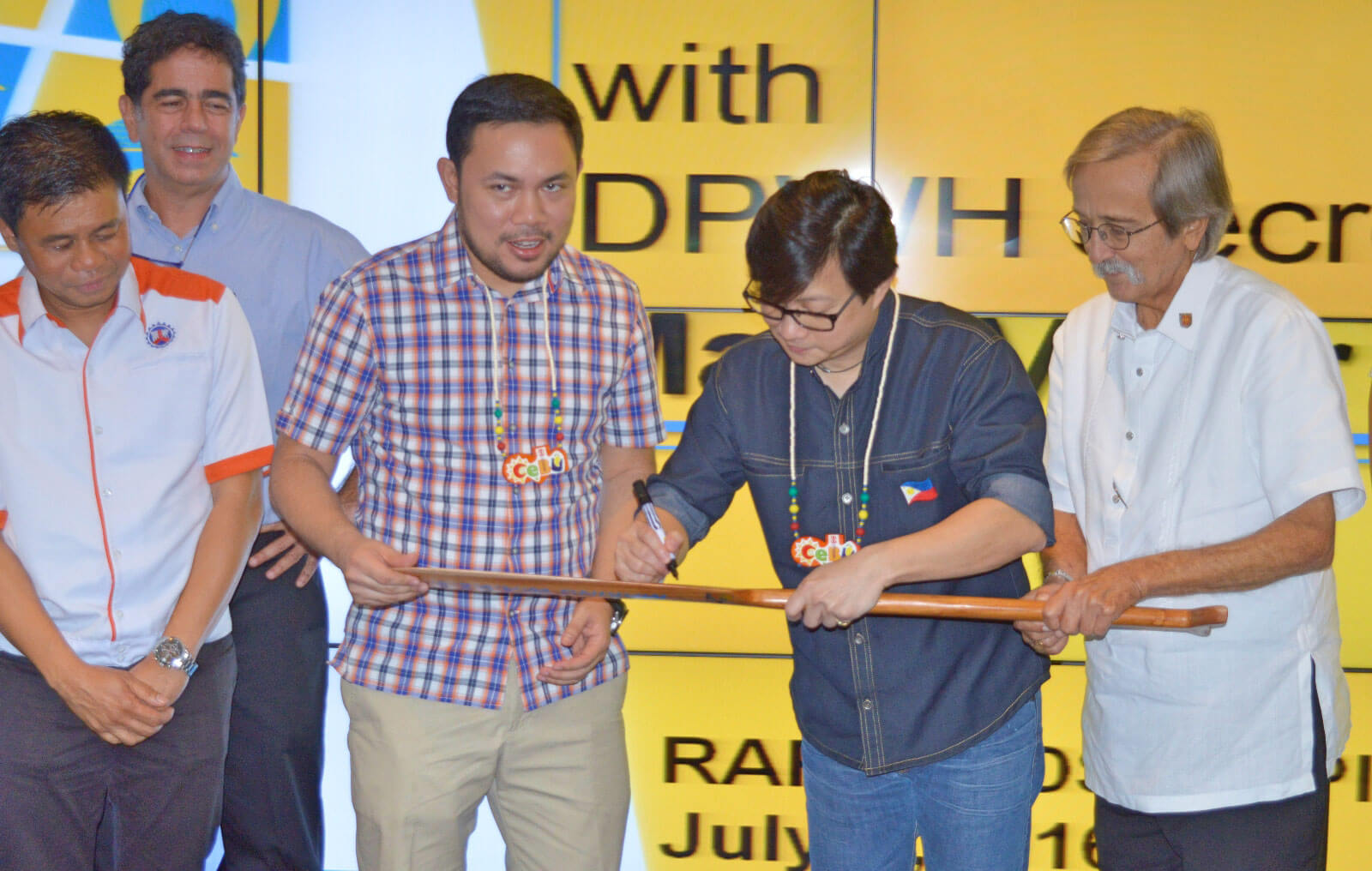The government of President Rodrigo Duterte will be responsive in dealing with calamities like the recent widespread flooding in Cebu, Department of Public Works and Highways (DPWH) Sec. Mark Villar told Cebu leaders earlier today.
Villar was in Cebu on Wednesday, July 6, to attend a consultation with local leaders at the Eduardo Aboitiz Development Studies Center. The consultation is also for the crafting of next year’s government budget.
“You can expect that the DPWH and this administration will be very aggressive, very visible, especially during this time when we have major problems and even calamities,” Villar said.
Improve lives of Cebuanos
Villar said the government will deal with the problems “head on” and promised that the “lives of Cebuanos will improve significantly.”
Last July 1, parts of Metro Cebu were severely flooded due to a downpour that lasted for more than an hour, causing a 5-hour traffic congestion.
The Philippine Atmospheric Geophysical and Astronomical Services Administration (PAG-ASA) Mactan Station recorded a rainfall intensity of 55 mm per hour a while the Department of Science and Technology (DOST) Banilad Station recorded 99 mm per hour in some places. A PAG-ASA official, however, said this was just a “normal” amount of rain.

Focus on solutions
Presidential Assistant for the Visayas Michael Dino asked people to stop pointing fingers at who could be responsible and instead focus on finding solutions. He said there were projects that were not sustained that contributed to the flooding.
Engineer Fortunato Sanchez, Jr. said three things are needed to solve the flooding problem: planning, solving the right-of-way problems and building dams.
Sanchez is the chair of the subcommittee on Infrastructure and Utilities of the Metro Cebu Development and Coordinating Board’s Research Program and Organizational Development.
Studies on flooding
He said there were studies on the state of flooding in Cebu City such as those done by Norwegian consultants in 1983, the JICA Master Plan in 1995, and the Drainage Master Plan by CBICI. He said these were not acted on.
“If we don’t do something, in 2023 maybe moderate rain can cause flooding or traffic,” he said.
Among the things pointed out by a study conducted by the Japan International Cooperation Agency (JICA) was the widening of rivers and creeks to handle the water. He said Cebu is mountainous making it prone to flash floods.
This was also recommended by DPWH 7 Director Ador Canlas.
Common causes
Canlas cited what he said were causes of flooding: the encroachment of informal settlers within waterways, failure to observe the required easement, improper disposal of garbage, cement residuals and other related wastes disposed from industrial establishments into the drainage line along national roads, insufficient outfall located inside the compound of a private establishment, and insufficient outfall traversing within private properties.
“Pinabuksan po ang drainage natin, and this is what we saw, tumigas na po na semento. Nakita namin walang silt traps yung drainage nila para sana tubig lang po ang lumabas. Our drainages are designed to capture runoff water,” Canlas said when they inspected the drainage along Logarta St.
They also found out that some waterways were cut by the roads and ended inside some private compounds.

Political will
When Mandaue Chamber of Commerce and Industry president Glenn Soco asked about the possibility of enacting emergency powers to cut government bureaucracy in dealing with the problem, Villar said they can deal with this by “sheer political will.”
“What tragedy will we have tomorrow, or next month or in November if a hundred millimeter rainfall hits or 150 or 200,” said Cebu Business Club president Gordon Alan Joseph.
Joseph said the Mega Cebu initiative pushes integrated planning by the experts as the best solution to dealing with problems like flooding. This is coupled with cooperation among the private sector, national agencies and local government units.
Address problems, propose solutions
Joseph also highlighted efforts of Mega Cebu in convening experts to address the problems and propose solutions. He also raised the need to study the human aspect of problems.
“Ang goal namin, is we want to take them [informal settlers] out of the danger areas and put them in areas where they are safe, where they have own housing,” he said in a separate interview with the media after the meeting.
The meeting ended with the signing of a bugsay or oar by the various stakeholders in Metro Cebu to symbolize the Mega Cebu campaign of making WAVES or Wholesome, Advanced, Vibrant, Equitable and Sustainable.
(Reggie Clyde Delosa is a Communication student at the University of San Jose-Recoletos. He is currently an intern of InnoPub Media, the publisher of MyCebu.ph.)

